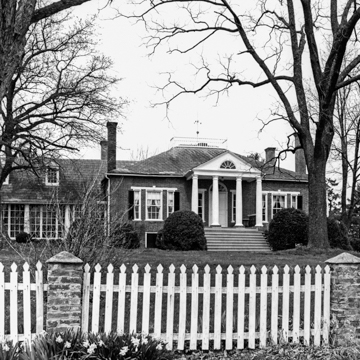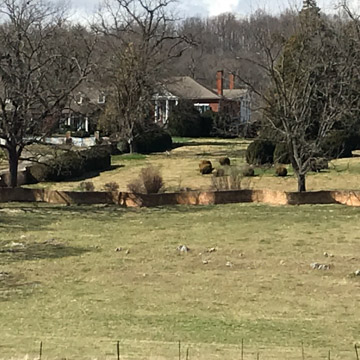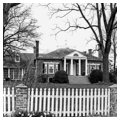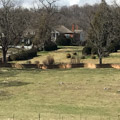Joseph Smith's elegant Classical Revival house clearly reflects the influence of Thomas Jefferson. Even though no written evidence of consultation between them exists, Smith, a prosperous planter who served in the Virginia House of Delegates, would have been familiar with Jefferson's work. Folly is a one-story balustraded deck-on-hipped-roof brick house set over a raised basement and entered through pedimented porticoes. Initially, there were three such porticoes, one on the facade and one on each flanking side wall, all featuring fanlit pediments and four Tuscan columns. One of the porticoes was removed in the mid-nineteenth century when a brick wing was added to the left side. The four-room house has a center passage crossed by side halls. The proportions of the house's porticoes are a little awkward, and the slender interior-end chimney stacks, although formally placed, are exceedingly high. Odd vertical brick bands separate sidelights from the fanlit entrance and also separate the different sections of the three-part facade windows. The cornice of the fine Flemish bond walls is of molded brick, a form more vernacular than formal. In the garden, Folly's serpentine brick walls are the state's only original early-nineteenth-century examples of this form. Jefferson's serpentine walls at the University of Virginia, the inspiration for Smith's walls, are reconstructions.
You are here
Folly
If SAH Archipedia has been useful to you, please consider supporting it.
SAH Archipedia tells the story of the United States through its buildings, landscapes, and cities. This freely available resource empowers the public with authoritative knowledge that deepens their understanding and appreciation of the built environment. But the Society of Architectural Historians, which created SAH Archipedia with University of Virginia Press, needs your support to maintain the high-caliber research, writing, photography, cartography, editing, design, and programming that make SAH Archipedia a trusted online resource available to all who value the history of place, heritage tourism, and learning.

















